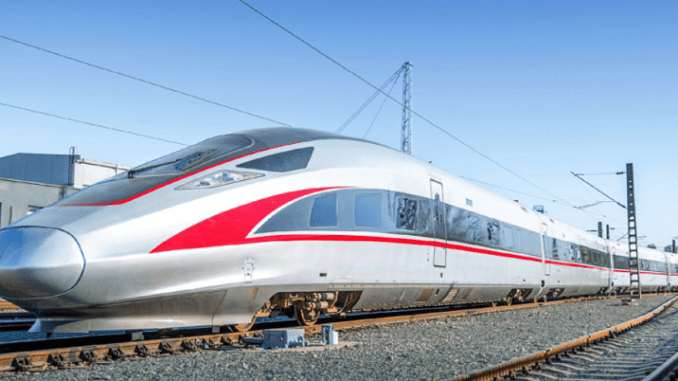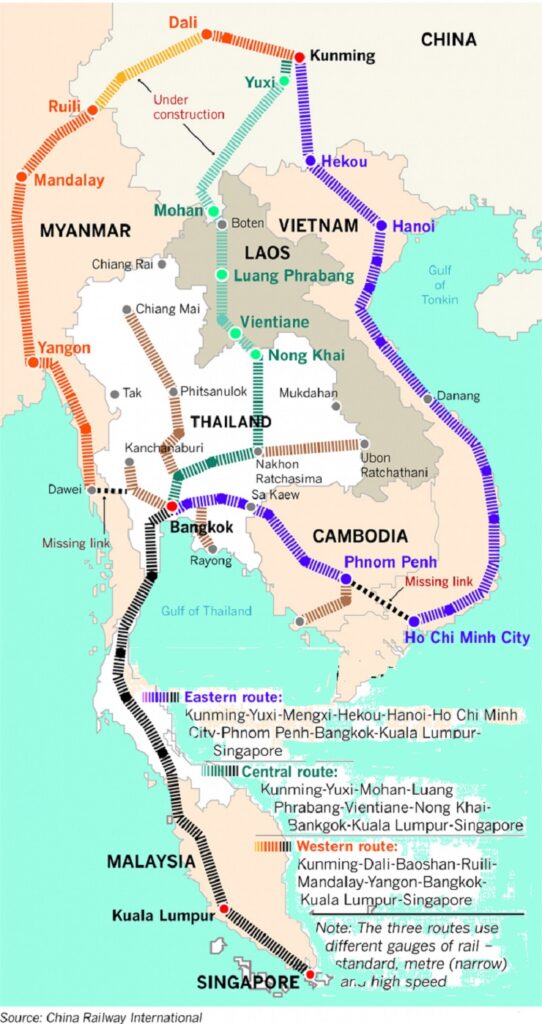
Over the past decade or so, China has also been working hard to promote cooperation with Southeast Asian countries, and China’s Belt and Road Initiative has become an important platform connecting various Southeast Asian countries.
Through the Belt and Road Initiative, China has invested in and constructed a large number of infrastructure projects in Southeast Asia, among which the Jakarta-Bandung High-Speed Railway and the China-Laos Railway are among the most famous railway projects.
While everyone has been focusing attention to the Jakarta-Bandung high-speed rail in Indonesia, China is involved in another very important high-speed rail project in Southeast Asia construction of which is accelerating – the “China-Thailand Railway.” Once the China-Thailand Railway is completed, it will have a profound impact on the entire Southeast Asia region.
The Bangkok-Nong Khai high-speed railway
On October 19, while in Beijing for the 2023 Belt and Road Forum, Thailand’s Prime Minister Srettha Thavisin expressed his government’s commitment to accelerating the construction of the long-delayed China-Thailand railway.

In 2016 Thailand and China signed an agreement for the Bangkok-Nong Khai High-Speed Train project, connecting Bangkok to Kunming through Laos. Thailand would fund the project itself, while China would provide technology and railway system expertise. The South China Morning Post reported in May 2023 that China had agreed to pass on high speed rail technology, skills and knowledge in 11 areas of railway construction to Thailand. Dongsheng News said that the transfer could include patents, licences and other intellectual property rights. Chinese made Fuxing Hao CR300 trains (cover photo) will used on the Bangkok to Nakhon Ratchasima line.
China sees the railway as an important component of the BRI, and Chinese officials are reported to have previously expressed frustration with the slow progress to date. Despite repeated construction delays the previous Thai government last year committed to completing the project by 2028.
Prime Minister Srettha Thavisin noted, in an interview with Xinhua prior to his recent visit to Beijing, that “Logistics is one of the significant issues for Thailand regarding BRI cooperation.” He promised that Thailand “would enhance the connection between its domestic railways and the China-Laos Railway, a flagship Belt and Road Initiative (BRI) project in the region.”
For Thailand, participating in the BRI offers the potential for increased economic integration and connectivity, not only with China but also with neighboring countries in the South East Asia. Additionally, the decision to connect Bangkok to the Lao border via Khon Kaen and Nong Khai underscores the government’s recognition of the pivotal role these provinces play as transportation hubs in Thailand’s northeast. By establishing high-speed rail links to these areas, the government in Bangkok aims to stimulate regional development within the country.
Project stages
When complete, the Thailand–China high-speed line will run 608km from Bangkok northeast to Nong Khai on the Laos border. From there it will join the Laos–China line at the Laotian capital of Vientiane, which runs to the Chinese city of Kunming in Yunnan province. The initial phase to Nakhon Ratchasima is expected to cost $5.1bn.
According to the Bangkok Post:



Sources:
- https://www.bangkokpost.com/thailand/general/2382536/full-steam-ahead-for-high-speed-trains
- https://thediplomat.com/2023/11/thailands-high-speed-railway-on-the-fast-track-to-ties-with-china-but-at-what-cost/
- https://www.globalconstructionreview.com/first-phase-of-thai-china-railway-to-be-complete-in-2027/
- http://en.people.cn/n3/2023/0601/c90000-20026509.html